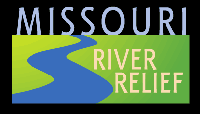A naturalist’s foray on Pelican Island Natural Area
by Steve Schnarr
After a successful Learning Festival and clean-up, we were excited to try something new during River Camp. Tim Nigh envisioned a day where naturalists from different disciplines would tromp together through the woods and sandbars of Pelican Island Natural Area to learn from each other about the web of life there.
Members of a Webster Groves botanical organization, who have been meeting every Monday for decades for botanizing field trips, came early to walk the beautiful Sioux Passage trail alongside the “Car of Commerce” Chute which forms Pelican Island. (The chute was apparently named for a riverboat that sunk there back in the day.)
Shortly after noon, other area naturalists, including members of the Confluence Chapter of Missouri Master Naturalists, members of Audubon Missouri and other assorted nature freaks converged on the Sioux Passage Boat Ramp, curious about what this odd day would bring.
We suited everyone up in lifejackets and split folks into three groups, trying to keep an even balance of birders, botanists and entomologizers. Tim Nigh and John Brady took a boatload up to the head of Pelican Island, where Anthony was preparing our camp for an premature tear-down due to the impending flood. They scoured the sandbars and adjacent bottomland forest, checking out the unique sandbar species as well as the proliferation of exotics within the forest.
The two other groups headed to opposite sides of the island, one group on the Missouri River side and the other on the chute side. From there they explored old channel sloughs, towering cottonwood forests and abandoned fields.
From a botanical perspective, things looked pretty grim. Although the forest was dominated by a native canopy of elm, cottonwood, several species of maple, hackberry and mulberry, the forest floor is dominated by exotics. Japanese hops, bush honeysuckle, lambs-quarters and more provide the bulk. And, of course, more nettles than you’d ever want to meet in a dark room.
The highlight was the migrating warbler population. The birders in the mix were dumbfounded by the amount of warbler activity that late in the day (we were in the woods from 1:30 to 4:00 p.m.). Magnolia warblers, blackburnian warblers, bay breasted warblers and more were darting among the viny canopy, appearing to feed even that late in the day.
As the boats headed back to the ramp, my boat went downstream to pick up a few “artificial substrate” baskets (essentially metal cages filled with rocks) that we had places two weeks earlier for a water quality monitoring workshop scheduled later in the week (cancelled due to the flood). To our amazement, they were still there, and Mike Leahy (Natural Areas Coordinator for MDC) hauled them in. We spread the rocks out in a plastic swimming pool at the boat ramp and checked out the life within. Everyone was amazed that the Missouri River, long believed to be devoid of life, a veritable toxic waste dump of the Midwest, could harbor such a mix of quality macro-invertebrates. From caddis-fly larvae to dragonfly nymphs and mayfly larvae, there was a lot going on in one of those samples.
Following the event, we had an hour for all of us nature freaks to discuss what we saw on the island and give our own educated guesses on what patterns we could see. For our first naturalist foray, we packed up feeling like a success! And we met some wonderful St. Louis area nature freaks just like us.

No comments:
Post a Comment